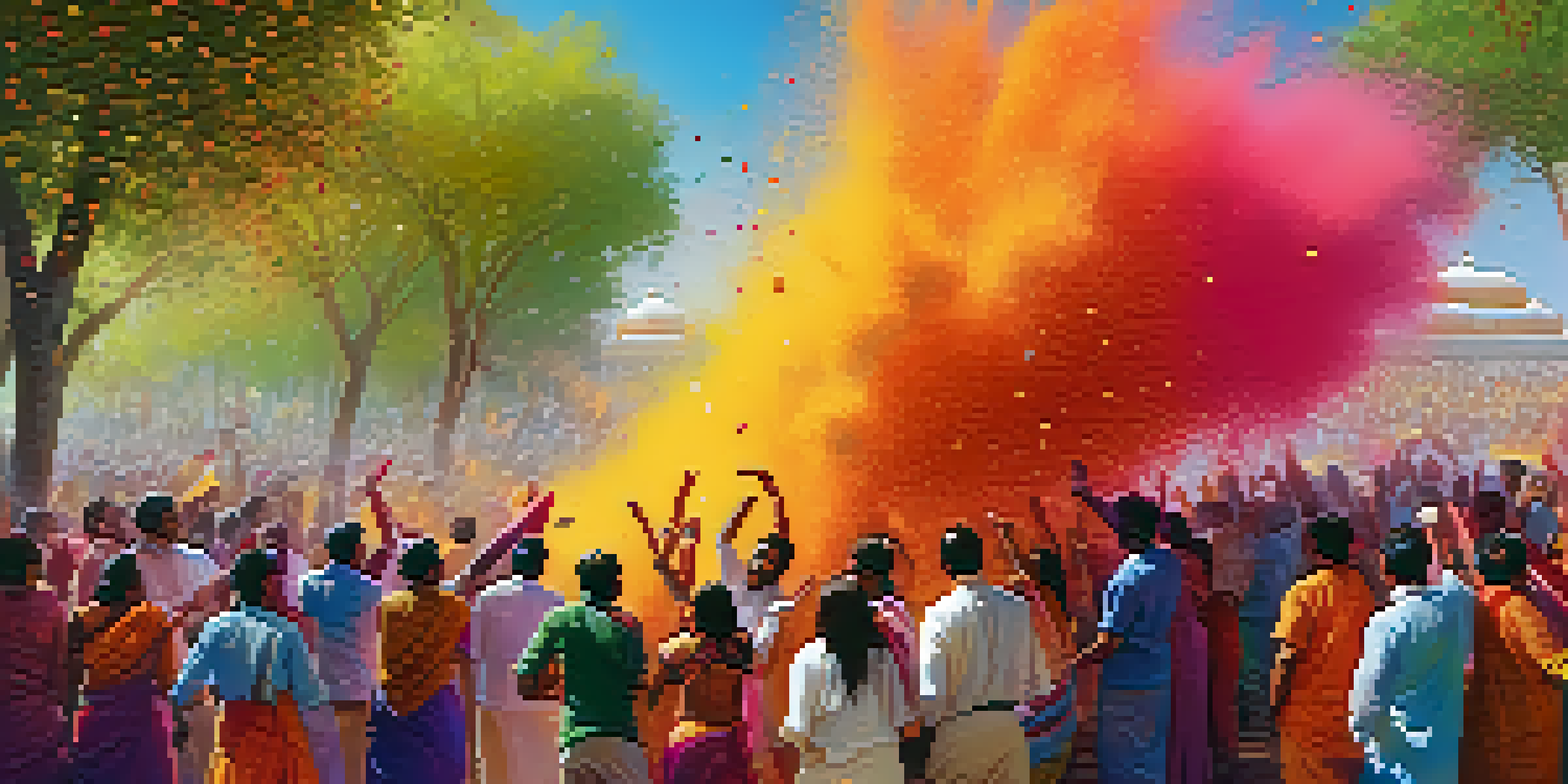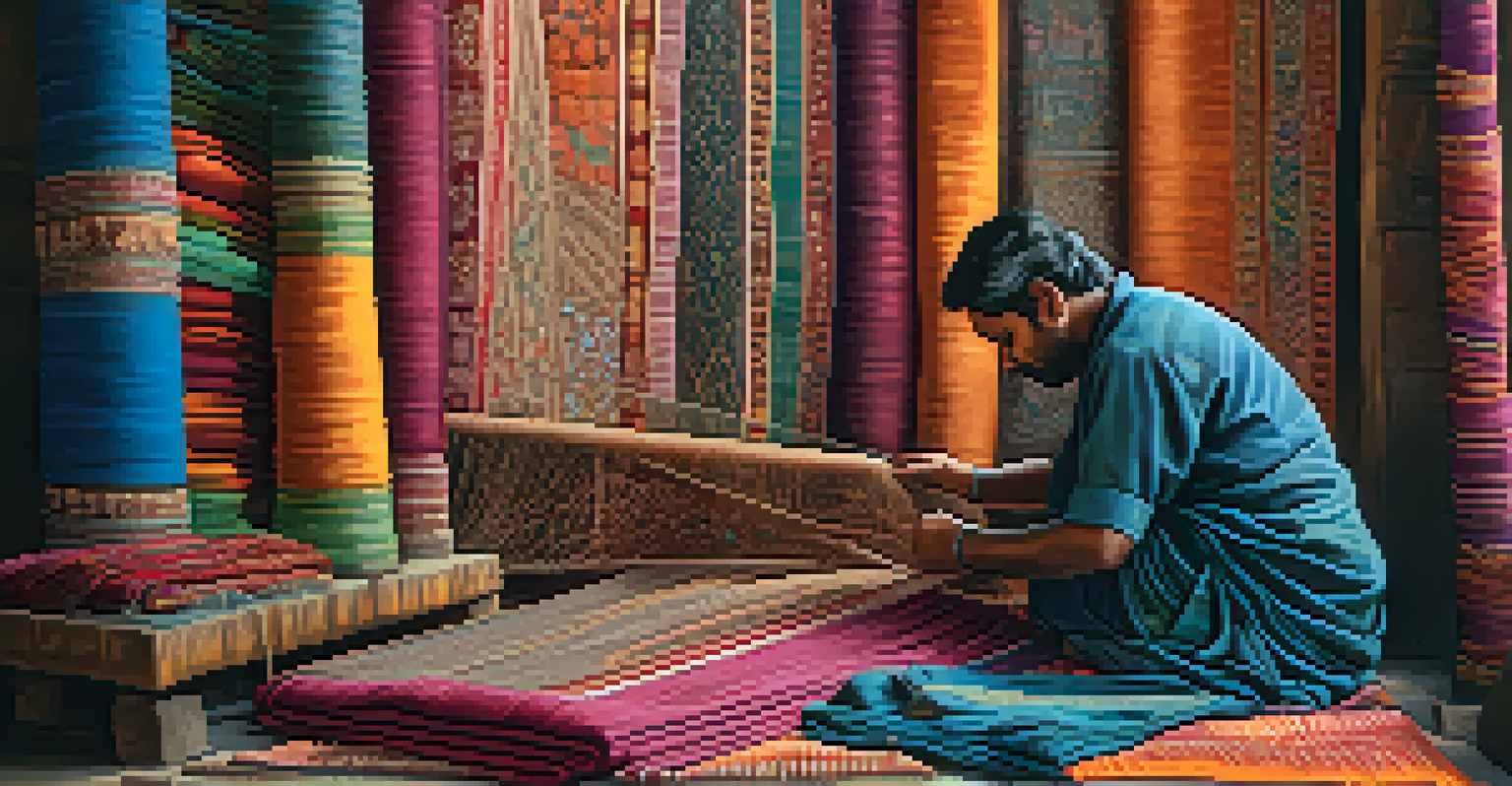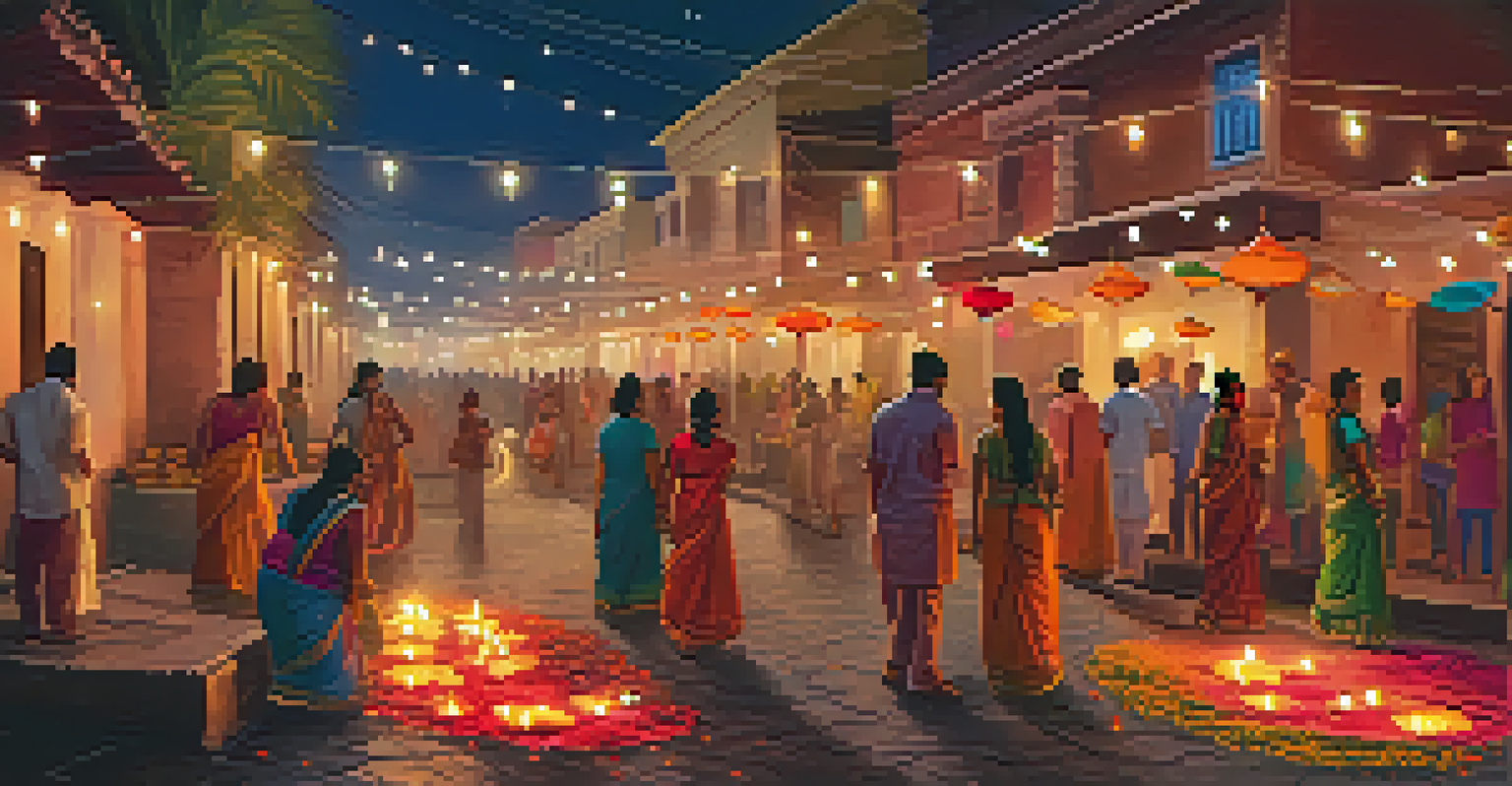Cultural Sensitivity: Understanding India's Diverse Traditions

India's Cultural Mosaic: A Tapestry of Traditions
India is often described as a cultural mosaic, where each state and region has its own unique traditions, languages, and customs. This diversity is not merely a collection of differences; it represents a rich tapestry interwoven with history and shared experiences. For instance, while Diwali is celebrated across the country, the way it is observed can vary dramatically from north to south.
Diversity is the one true thing we all have in common. Celebrate it every day.
Understanding this cultural mosaic requires an open mind and a willingness to learn about the various practices that define each community. From the colorful festivals that celebrate harvests to the intricate rituals associated with weddings, every tradition has its significance and story. By appreciating these differences, we can foster a deeper respect for one another.
Moreover, recognizing these unique customs helps in promoting social harmony and inclusivity. When we take the time to understand and celebrate diversity, we not only enrich our own lives but also build bridges between communities.
Key Festivals and Their Cultural Significance
Festivals in India are a vibrant expression of its cultural diversity, each carrying its own significance and rituals. For example, Holi, the festival of colors, symbolizes the arrival of spring and the triumph of good over evil, while Eid celebrates community and sharing. These events are not just about celebration; they reflect the values, beliefs, and histories of the communities that observe them.

Participation in such festivals, whether as an observer or a participant, can provide profound insights into the local culture. Engaging with these traditions can foster a sense of belonging and appreciation for the rich heritage surrounding us. It’s a chance to step into someone else’s shoes and understand their worldview.
Embracing India's Cultural Diversity
India's cultural mosaic enriches lives and fosters respect through its unique traditions and practices.
However, it’s essential to approach these celebrations with respect and sensitivity. Misunderstanding the significance of a festival or appropriating elements without proper context can lead to cultural insensitivity, which undermines the very essence of these practices.
The Role of Language in Cultural Identity
Language is a fundamental aspect of cultural identity in India, with over 1,600 languages spoken across the country. Each language carries its own idioms, expressions, and cultural nuances that reflect the values and traditions of its speakers. Knowing even a few words in a local language can significantly enhance interactions and demonstrate respect for the community’s heritage.
Culture is the widening of the mind and of the spirit.
For instance, greeting someone in their native language can create an instant connection and break down barriers. It shows that you value their culture and are willing to make an effort to communicate. This simple act can open doors to deeper conversations and relationships.
Additionally, understanding the context in which language is used can prevent misunderstandings. Certain phrases or gestures may carry different meanings in various cultural contexts, and being aware of these subtleties can promote more meaningful exchanges.
Culinary Traditions: A Taste of Cultural Diversity
Indian cuisine is as diverse as its people, with each region offering distinct flavors and specialties. From the spicy curries of the south to the rich biryanis of the north, food plays a crucial role in cultural expression. Sharing a meal is often a way to bond, and understanding these culinary traditions can be a delightful journey into a community’s culture.
When exploring Indian cuisine, it’s essential to be mindful of dietary restrictions and preferences that are often rooted in cultural beliefs. For example, many Hindus are vegetarian, while Muslims may consume halal food. Respecting these dietary customs not only shows cultural sensitivity but also enriches the dining experience.
Festivals Reflect Community Values
Participating in India's vibrant festivals provides insights into the beliefs and histories of diverse communities.
Moreover, food can serve as a gateway to discussions about history, geography, and even spirituality. Each dish has a story, and by asking about these stories, we can deepen our understanding of the culture and the people who cherish these culinary traditions.
Traditional Arts and Crafts: A Reflection of Heritage
India’s traditional arts and crafts are a testament to its rich cultural heritage, showcasing the skills and creativity of artisans across the country. From intricate pottery and textiles to stunning paintings and sculptures, each craft has its own history and significance. These art forms are often passed down through generations, preserving the techniques and styles of the past.
Visiting local markets or craft fairs provides an opportunity to appreciate these artistic expressions firsthand. Engaging with artisans and learning about their craft can foster a deeper understanding of the cultural context in which these works are created. It’s a chance to support local economies while immersing oneself in the culture.
However, it’s important to approach the appreciation of these crafts with respect. Recognizing the cultural significance behind each piece, rather than viewing them merely as souvenirs, can transform our perspective and enhance our connection to the culture.
Navigating Social Norms and Etiquette in India
Social norms and etiquette in India can vary widely based on region, community, and context. Understanding these norms is crucial for respectful interactions. For example, in many parts of India, it is customary to greet elders with a respectful gesture, such as a namaste, which involves pressing the palms together and bowing slightly.
Being aware of personal space and physical contact is also important. In some communities, physical touch may be reserved for close friends and family, while in others, a handshake may be appropriate. Observing and adapting to these social cues can help avoid unintentional offense and foster positive interactions.
Cultural Sensitivity Enhances Interactions
Understanding and respecting cultural norms is essential for fostering positive relationships in India's diverse society.
Additionally, patience and humility are valued traits in Indian culture. Taking the time to listen and engage thoughtfully can make a significant difference in how one is perceived and can lead to more meaningful connections.
The Importance of Cultural Sensitivity in Global Interactions
In an increasingly globalized world, cultural sensitivity has become more important than ever. Understanding and respecting cultural differences is essential for effective communication and collaboration, especially in diverse settings like India. This sensitivity not only fosters goodwill but also enhances mutual understanding and cooperation.
For businesses looking to engage with Indian markets, cultural sensitivity can lead to more successful partnerships and customer relationships. Being attuned to local customs and values can give companies a competitive edge and help build trust with clients and stakeholders.

Ultimately, cultivating cultural sensitivity is about recognizing our shared humanity. By valuing the rich traditions and diverse backgrounds of others, we create an environment where everyone feels respected and valued, paving the way for a more inclusive and harmonious world.